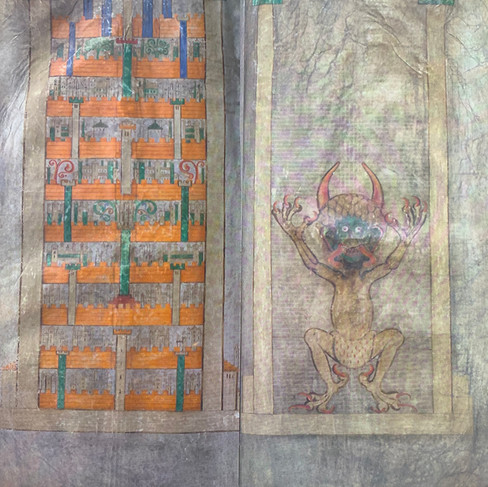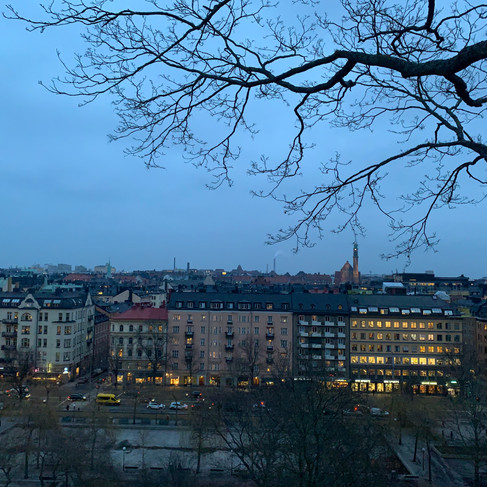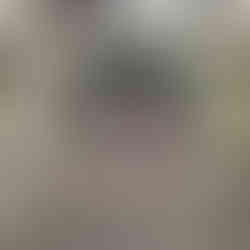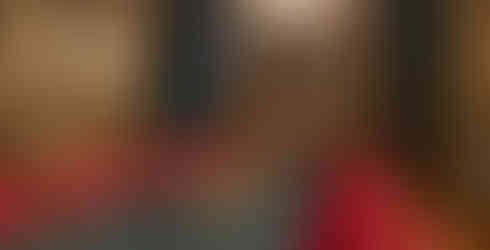Stockholm: A Sensational, Sassy and Sophisticated City Break
- oldbagonaplane
- Apr 19, 2023
- 11 min read
Updated: Apr 30, 2023
Enjoy a winter mini-break holiday in Stockholm, Sweden. The city is known for its world-class museums, delicious food scene, and vibrant art scene. The ABBA Museum, which celebrates the iconic Swedish pop group, is a fun and interactive experience for music lovers, and the Vasa Museum, which features a well-preserved 17th-century shipwreck, is a must-see for anyone interested in maritime history. There is never a shortage of things to do while on vacation in Stockholm! The city has a rich history, culture, and culinary scene, so visitors are sure to find plenty of activities to keep them busy.

I have been trying to get my travel mojo back and what better way than a quick February 3-day mini-break to Sweden? In my quest to conquer the map of Europe, I have not crossed off the Nordics, and thought there is no better time of year to do this than the dead of winter. My daughter joined, though she would have preferred a beach, a Transylvanian castle-hop trip, or more specifically, a Valentine’s Day mini-break with anyone apart from me.
In my youth, I dreamed of travel, and I have been lucky enough to have travelled to some of my most dreamed about locations. Marrakech, Nampula, Tunis, Lagos, Bucharest, Riyadh, Reykjavík. Somehow, Stockholm never made into my top ten places of interest. I had enjoyed separating red fish from the gummied school of varietal colours, lolled with the muppet chef, his making of meatballs and his exclamation of ‘Bork! Bork! Bork!’, (which means ‘jar’ BTW). In 1985, when Ikea in the United States, I discovered a joy for flat-pack furniture I never knew I could feel. I didn’t know what the city had to offer, so I got out the guidebooks, and made a list of the coolest things to see and do in Stockholm.
We arrived on the evening of the 14th, and as said previously, my daughter had no interest in a Valentine’s dinner with mummy. So, I booked Aifur, an underground Viking restaurant in Gamla Stan, the Old Town. We had mead and reindeer charcuterie, a rather chewy piece of steak and plenty of laughs.
Gamla Stan is the old town of Stockholm. It is located on the island of Stadsholmen in the central part of Stockholm and is one of the best-preserved medieval city centres in Europe. Gamla Stan is well-known for its colourful buildings, narrow streets and alleys, old buildings, and picturesque squares such as Stortorget and the Nobel Museum. The Royal Palace, Stockholm Cathedral, and the Parliament are also located in Gamla Stan. It is a pedestrian area, central to most of the tourist attractions, with loads of restaurants, cafés, and shops. Near the Viking restaurant, there is also a pirate one, but that seems a bit superfluous.

We stayed at the Hôtel Reisen, by Hyatt, perfectly located for us on Skeppsbron in Gamla Stan. The room was very nice, and the staff was very accommodating. There are two bars, one with live jazz every Thursday from 7:30pm, and a restaurant which also serves a continental breakfast. The spa facilities are located in brick-clade vaults in the basement, where a female mason once left her mark with her footprint in a handcrafted brick. Sadly for me, the re-creation of a Swedish forest pond held for me no interest, as I am very disinterested in a 15C plunge pool. I stuck to the sauna.
Day One:
After our evening at the Viking restaurant, and the lovely continental, we headed out to the beautiful island of Djurgården. Stockholm is famously known as the "Venice of the North" because it's built on 14 islands connected by 57 bridges, which gives the city its unique character. Djurgården is home to many of Stockholm's top museums, including the Vasa Museum, the ABBA Museum, and the Skansen Open-Air Museum. And that is how we would spend our day, first stop, ABBA. The slogan for the ABBA museum is ‘walk in, dance out’ and that is precisely what we did. There is a lot to see here, including studio recreations, written histories of the Benny, Bjork, Frida and Agnetha, and an extensive costume archive. There are avatars to dance on stage with, and karaoke to sing along to. The museum also has temporary exhibitions and a gift shop where you can fill all of your ABBA needs.

The Skansen Open-air Museum is across the street from the ABBA museum, and worth a visit, though we did not. Founded in 1891, this is the oldest open-air museum in the world and features over 150 historic buildings that have been relocated from all over Sweden to create a replica of a traditional 19th-century Swedish town. Visitors can walk through the streets of the town, watch traditional craftspeople at work, and learn about Swedish history and culture. Skansen is also a popular zoo, with over 75 species of animals, including bears, wolves, lynx, and moose. We didn’t go in because, well, it was a bit hilly, and I’m not all that keen on zoos. Skansen is open year-round and hosts many events throughout the year, including traditional Swedish celebrations such as Midsummer and Lucia.
Also on Djurgården is the Vasa Museum and the Vrak Museum of Wrecks, located next to each other. The Vrak opened in 2020 and is dedicated to showcasing the history of shipwrecks and the underwater world of the Baltic Sea. The museum features exhibits on shipwrecks, including artefacts and stories of the vessels that have been lost in the Baltic Sea over the centuries. Visitors can learn about the technology used to discover and study these wrecks and get a glimpse of the underwater world through interactive exhibits and displays. There are also displays on the history of maritime navigation and the cultural and economic impact of the Baltic Sea region. One of the highlights of the museum is the chance to see the Vasa, a 17th-century warship that sank on its maiden voyage and was recovered in the 20th century. The Vasa is one of the best-preserved shipwrecks in the world and is a major attraction for visitors to Stockholm.
As we wondered out of Djurgården we noticed another building called Junibacken, which turned out to be the Pippi Longstocking Museum. A long-time fan of Pips, I was disappointed to learn that we had missed out on this one, until I learned that this museum is directed at children, ages 2-6, except for the Story Train, which has a suitable for those 1-100. I would just have to settle for finding Pippi author, Astrid Lindgren’s house, which we did.

Fika is a Swedish tradition of taking a coffee break with something sweet. There are plenty of cafés and bakeries in Stockholm selling coffees and Semla. Apparently these buns are traditionally Lenten, and made on Shrove Tuesday, but they were everywhere in February, for which I was delighted. Semla have a light cardamom bun, baked until golden and hollowed out, then filled with an almond mixture and topped with a generous piping of whipped cream. I like Fika!
We then headed to the National Library in Östermalm to see the Codex Gigas. This massive book, 620 pages and three feet in size, was hand-scribed in the 13th century by a single monk and originally stored in the Benedictine monastery at Podlažice. It contains not only the New and Old Testaments but also other shorter texts addressing matters of importance for the time; including exorcism, grammar, a calendar and a full-page colour rendering of the Dark Lord, himself giving the book its nickname; the Devil’s Bible.
Back in Gamla Stan, we stopped in one of the many Italian restaurants for pizza and hearty red wine, which was much different from the chewy steak and honey-water we had the night before. There is a lot more to discover in here than novelty eateries, including the Cuckold of Skeppsbron, which is a wall relief of a crying man’s face hung above what seems to be a very rudimentary vagina. A beautiful red and white brick building on the Stortorget is the Ribbinska Huset, or the House of Ribbing. This house dates back to the 15th century, and it is said that each of the white bricks represents a murdered Swedish nobleman. Mårten Trotzigs Gränd, is a virtical street in the middle of Gamla Stan, that connects the two main roads. The alley, at its most narrow, is 35 inches (0.89 m) wide, and included a skinny staircase, a couple of street lamps, and countless tourists.
Day Two:
We stopped for a breakfast cappu at the harbour side Bröd & Salt, and enjoyed watching the sun rising out the water, then walked over to Normalmstorg, which is a public square located in the Östermalm district. The square is named after the "Normalmstorg" department store that used to be located there in the past.
The square is known for its picturesque buildings, high-end shopping, and popular restaurants. It is a popular spot which is often considered one of the most exclusive and upscale areas of Stockholm. In addition to that, Normalmstorg was also once the location of Kreditbanken, the notorious bank where four employees were held hostage by two ex-convicts, in 1973. This stand-off gave the world the term ‘Stockholm Syndrome’.
During the incident, the hostages began to bond with their captors and showed signs of empathy and loyalty towards them. The hostages defended the captors during the trial and even raised money for their legal defence. This unusual behaviour by the hostages led to the term "Stockholm Syndrome.”
Today, the term "Stockholm Syndrome" is used to describe a range of situations where individuals form an emotional bond with their captors or abusers. It has been observed in cases of domestic abuse, human trafficking, and other forms of hostage-taking. My daughter has frequently described herself as a survivor of Stockholm Syndrome, and I, the perpetrator. And for this less than appreciative comment on my parenting skills, I plan to take her to the Kreditbanken, chain her to a drain pipe, and ditch her there. I didn’t. I really wanted to, but the chains were too heavy to carry around. We went ice skating instead.

Not far from Normalmstorg is Kungsträdgården where they rent skates in the winter. Is it even possible to be in Sweden in the Winter and not go ice skating? I admit we did not last too long on the ice, skating is much harder than I remember! We met a lovely man who was a refugee studying in Sweden. It was his first time on ice and his smile could not be bigger. We had fun filming him, so he could post his progress to his friends back home. Before we finished skating, he was better than we.
After the ice skating, we tracked down Astrid Lingred’s house, which was not a museum, then visited Svampen, a giant, concrete mushroom. The Svampen is a rain cover designed by Holger Blom in 1937. It can be found in the middle of a triangle of traffic, but this is not the first giant-ass concrete mushroom to grace this intersection. In 1979, traffic patterns changed, and the now unneeded mushroom fell into disrepair. Eventually, it was removed with much outrage by the local community, who demanded it be put back. Sneakily, the giant concrete mushroom was replaced with a new, fresher one. If you check out films like, ’the Girl in the Spider Web’, or ‘the Girl With the Dragon Tattoo’, you may catch glimpses of the giant concrete mushroom in the background.
The Stockholm Observatory is an astronomical observatory, founded in the 18th century by King Adolf Frederick and was initially used for positional astronomy, celestial navigation, and timekeeping. Today, the observatory is part of Stockholm University's Department of Astronomy, on Saltsjöbaden Island and hosts research and educational activities in astronomy. The observatory has several telescopes, including a 25-cm refracting telescope that was built in the 19th century and is still used for public observations. The observatory also has a digital planetarium that offers shows and educational programs for visitors. It also has stonking views of the city, and worth a mini-hike up the hill to get to.
Stockholm is a very arty city, and apart from the multiple museums on offer, there is art on every street corner and one could easily spend a weekend trying to find them all. Some of the best art in the city is even found subterranean in the Metro stations.

Just north of our hotel in Gamla Stan, is the pedestrian shopping street, Drottninggatan. Drottninggatan is lined with shops, cafés, restaurants, and department stores, offering a wide range of products and services. We spent a good deal of time searching through shops searching for chunky Swedish jumpers, of which there were plenty. The street is known for its vibrant atmosphere and lively street performers, especially during the summer months.

In addition to shopping and dining, Drottninggatan is also home to several notable landmarks, including the Kulturhuset Cultural Centre, which houses galleries, treaters, and a library, and the Stockholm Mosque, which is one of the largest mosques in Sweden. We also stumbled upon, but sadly did not have time enough to visit, the Centralbadet Spa, Stockholm. Set back from the street in a leafy little cul-de-sac, this historic spa designed in the Art Nouveau style was built in 1904, and retains that turn of the 19th century charm. The spa has 3500 square metres, hot and cold pools, a sauna, a vintage gym and treatment rooms. You will also find the restaurant Ecobaren with a complete menu of organic taste sensations, yoga, sun therapy, a classic barbershop and an outdoor terrace. I will definitely book for next time!
And speaking of Art Nouveau, Nordiska Kompaniet, or NK, is located in the heart of Stockholm, on Hamngatan, and is easily accessible by public transportation. Its iconic Art Nouveau facade and elegant interior make it a must-visit destination for those looking for a luxurious shopping experience in Stockholm. The store was founded in 1902 by Josef Sachs and quickly became one of the city's most popular shopping destinations, known for its high-quality products and elegant atmosphere. NK offers a wide range of products, including fashion, beauty, home decor, and gourmet food, from both international and Swedish brands. The store is known for its designer collections and luxury brands, as well as its own in-house brand of fashion and home goods.
Day Three:
Our flight time allowed us just enough time to indulge in another continental breakfast, before a tour of the Royal Palace. Also known as the Kungliga Slottet, the palace, located in Gamla Stan, dates back to the 18th century and is the official residence of the Swedish monarch. It has over 600 rooms, making it one of the largest palaces in Europe. It is open to the public and visitors can explore several of its halls and galleries, including the Royal Apartments, the Hall of State, and the Treasury.
The Royal Apartments are beautifully decorated with furnishings from the 18th and 19th centuries and offer a glimpse into the lives of the Swedish royal family. The Hall of State is used for official ceremonies and events, such as state dinners and award ceremonies. The Treasury houses the Swedish Crown Jewels, including the crown, sceptre, and orb used by the monarch during coronation ceremonies. Visitors can also witness the Changing of the Guard ceremony, which takes place daily outside the palace.
We had the most wonderful time in Stockholm. The city is perfect for a mini-break from London, and there is plenty on offer to keep any visitor busy for days. Everything is very accessible by foot, though public transportation is well managed, should walking not be for you. One might also enjoy a boat cruise around the Stockholm Archipelago, a visit to the Fotografiska, a contemporary photography museum, and the Moderna Museet, which houses a collection of contemporary art, including works by Picasso and Dali. Södermalm is a trendy neighbourhood known for its street art and eclectic dining scene.
And for the foodies: Östermalm's Saluhall, is a gourmet food market where traditional Swedish food, such as gravlax and meatballs is on offer. Traditional Swedish restaurants, such as Pelikan or Bakfickan, offer classic Swedish dishes, while the trendy Nook or Gastrologik, pride themselves with innovative Nordic cuisine. One could also enjoy a meal at one of the city's many waterfront restaurants, such as Fjäderholmarnas Krog or Oaxen Slip, which offer stunning views of the water and delicious seafood dishes.

#ÖstermalmsSaluhall #Pelikan #Bakfickan #FjäderholmarnasKrog #OaxenSlip #Nook #Gastrologik #Södermalm #ModernMuseet #Fotografiska #StockholmArchipelago #Treasuryhouses #SwedishCrownJewels #SwedishRoyalApartments #SwedishRoyalFamily
#NordiskaKompaniet #Drottninggatan #Kulturhusetculturalcentre #StockholmMosque #PippiLongstocking #AstridLingren #CentralBadet #SaltsjöbadenIsland #StockholmObservatory #Normalmstorg #StockholmSyndrome #Kungsträdgården #Östermalm #HouseofRibbing #Stadsholmen #SkansenOpenairMuseum #Skeppsbron
































































Comments